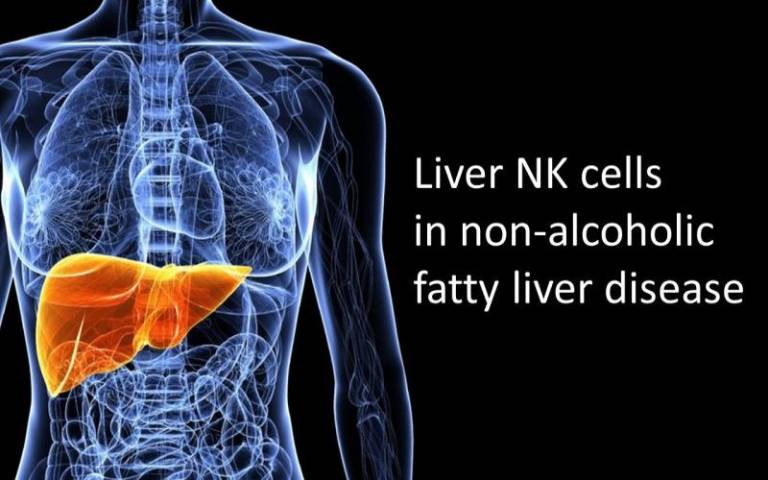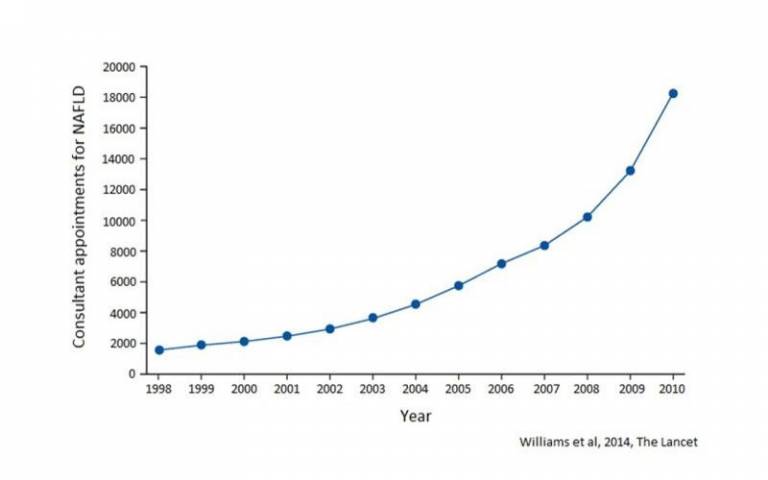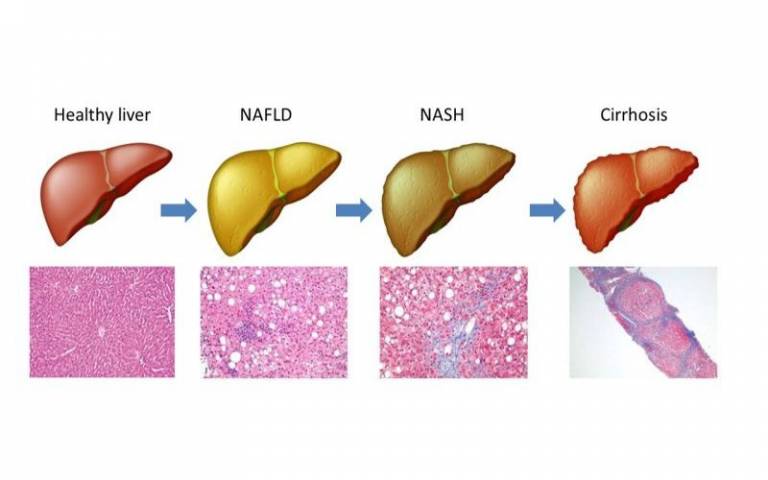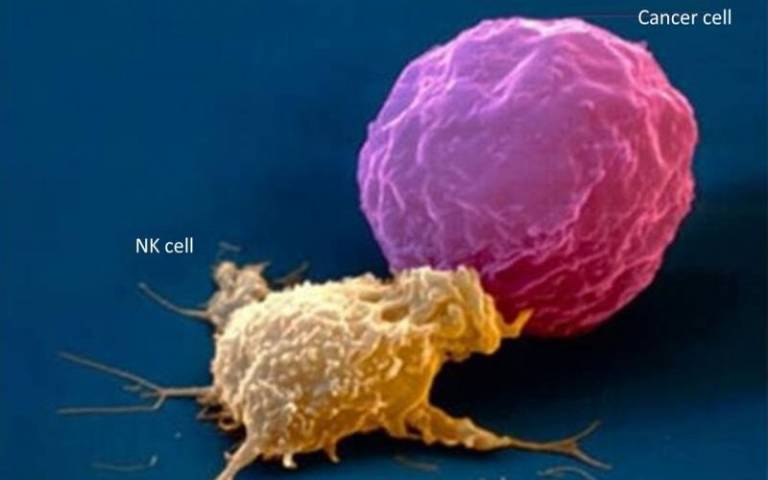Find out about Dr Victoria Male's research on liver NK cells.


Liver disease in the only cause of mortality in under 65-year-olds that is currently increasing in the UK and obesity-related liver disease is a major contributor to this. Non-alcoholic fatty liver disease (NAFLD) occurs as a result of excess fat being stored in the liver. The leading risk factor for NAFLD is obesity, and the number of NAFLD cases in the UK are increasing in line with increasing rates of obesity. It is projected that 50% of the UK population will be obese by 2030, so NAFLD is a serious and growing public health concern.

Non-alcoholic fatty liver disease (NAFLD) occurs when excess fat is stored in the liver. It is estimated that 25 – 30% of adults in the UK suffer from some form of NAFLD. In some cases, the fatty liver may become chronically inflamed. This is called non-alcoholic steatohepatitis (NASH) and affects 5% of adults in the UK. About 20% of NASH patients go on to develop scarring of the liver, called cirrhosis, which prevents it from functioning properly. They may also develop primary liver cancer.

Natural killer (NK) cells are immune cells. Blood NK cells protect the body by killing virally-infected and cancerous cells. Some organs, including the liver, have a special, resident NK cell population. These NK cells are not good at killing but instead help the organ to carry out its role in the body.

Two kinds of NK cell are found in the liver. Liver-resident NK cells are found only in the liver, not in the blood. They are likely to have a special role in the liver, but we do not yet know what this is. Recirculating NK cells are blood NK cells that enter the liver and then leave again. Liver-resident NK cells produce large quantities of two immune messengers called IFNγ and TNFα, which are known to be important factors for the progression of NAFLD to NASH. Recirculating NK cells also produce IFNγ but, unlike liver-resident NK cells, they tend to kill other cells. This could be harmful in NAFLD, for example if they kill the functional cells of the liver, hepatocytes. On the other hand, they could be helpful, for example by killing hepatic stellate cells, which are the cells that cause scarring and cirrhosis. Our group aims to find out what liver-resident NK cells do in the healthy liver, and how both liver-resident and recirculating NK cells may be involved in NAFLD and NASH.
 Close
Close

